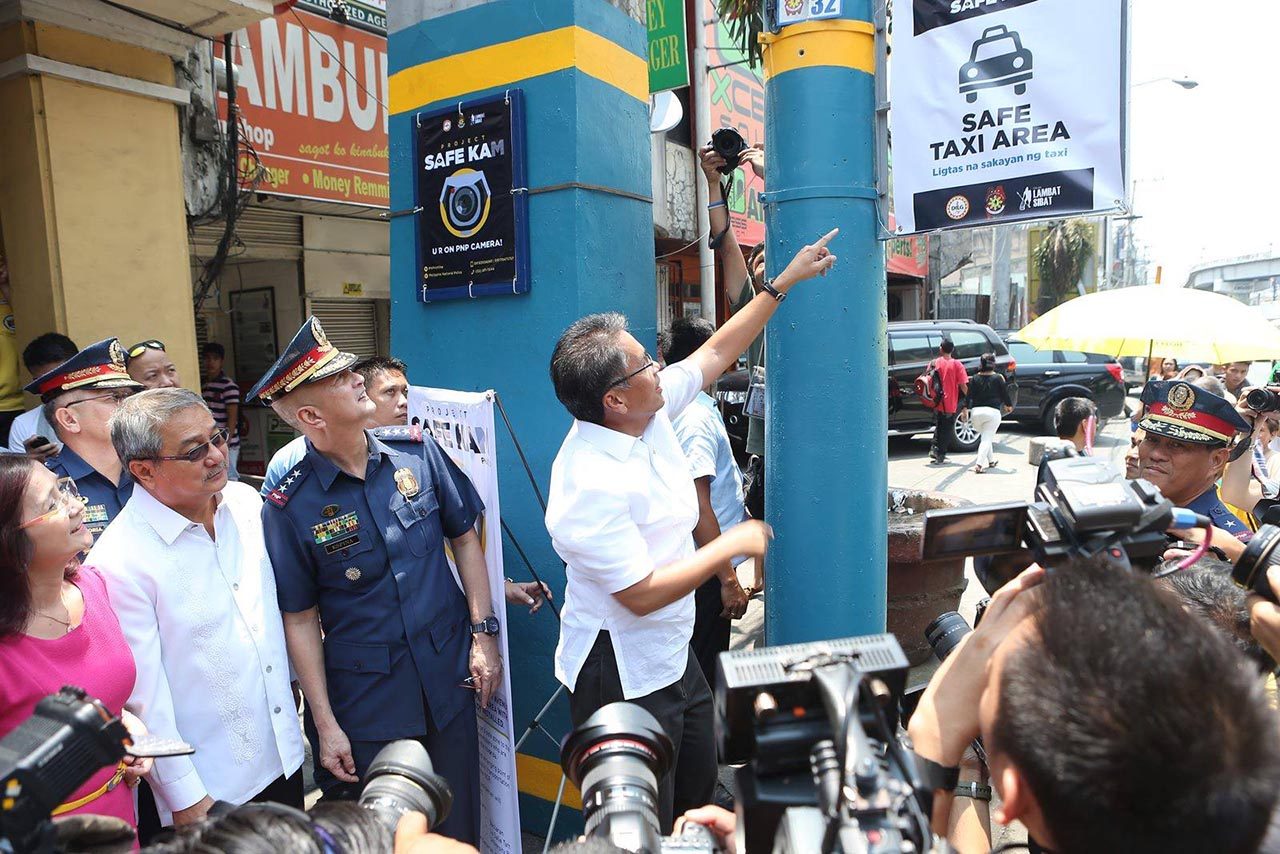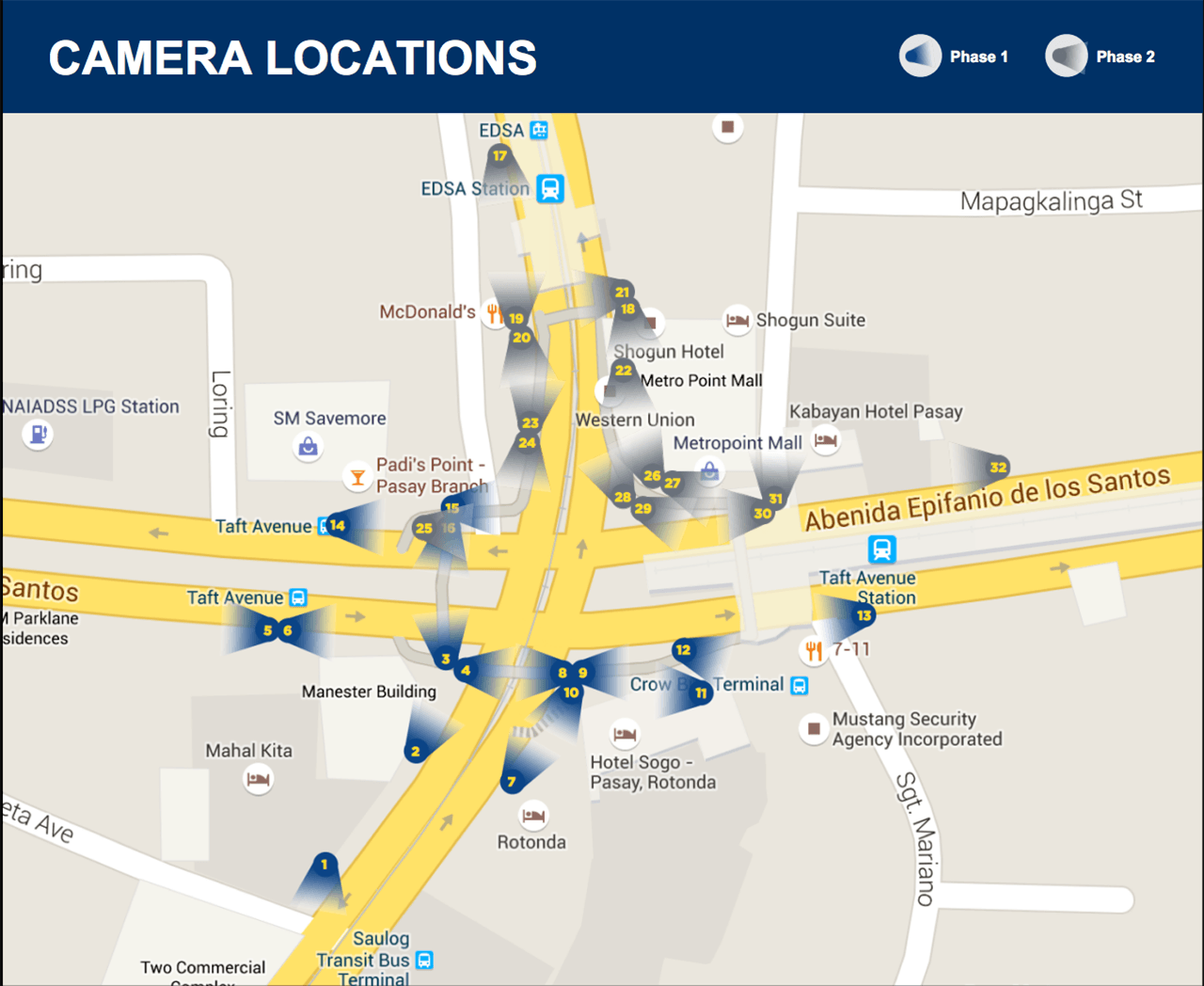SUMMARY
This is AI generated summarization, which may have errors. For context, always refer to the full article.

MANILA, Philippines – Are you a Metro Manila commuter who frequents the EDSA-Pasay rotunda area? Your travels are now a little safer, after the Philippine National Police (PNP) installed closed-circuit television (CCTV) cameras in the area.
It’s part of “Project Safe Kam,” unveiled by the PNP on Friday, May 29. The project also involves the launch of “Taxi Safe Zones,” designated cab queuing areas which are also covered by CCTV cameras.
“More of prevention ito because sino’ng masamang loob ang magtatangka na gumawa ng isang krimen dito? Di ba kaya ang tawag namin dito ay safe zone kasi naka-record lahat ng gawain dito?” Interior Secretary Manuel Roxas II told reporters during the launch of the project.
(It’s more for crime prevention because what kind of person will try to commit a crime [with the CCTV cameras installed]? That’s why it’s called a safe zone, everything will be recorded.)

“Safe Kam” is “phase two” of the PNP’s Oplan Lambat Sibat, which saw crime rates cut down in the National Capital Region through redeployment of cops based on audited data. Lambat Sibat has since been rolled out to nearby regions.
The location of the cameras are based on the usual routes commuters take when passing by the Pasay rotunda area, which houses a Light Rail Transit station, a Metro Rail Transit station, commercial establishments, as well as several jeepney and bus terminals, Roxas said.
Government officials estimate close to 1 million people pass through the area every day.
Funded by both the PNP and the Federation of Filipino-Chinese Chambers of Commerce and Industry, the Pasay phase of the project costs P650,000, according to Roxas.
Expansion ideas
The 32 CCTV cameras installed around the EDSA-Pasay rotunda serve as the “pilot” of the project, which will eventually be rolled out in other “areas of convergence” which see high foot traffic: the University Belt area, the Monumento area, the MRT North EDSA station-West Avenue area, the EDSA Cubao-Aurora Boulevard area, the Baclaran area, and the La Salle-Taft area.
Roxas said that before the year ends, CCTVs will also be installed in those areas, after the PNP goes through the usual bidding and procurement procedure. Funds have already been allocated for the project, Roxas said.
The “pilot run” in the Pasay area will determine if the cameras purchased are sufficient, and iron out any kinks in the implementation, said Roxas.
Based on video clips showed to media, faces of people and plate numbers of vehicles are clear in the footage from the current CCTV cameras installed.
The PNP, however, will be unable to monitor the live footage 24/7 because it is understaffed as it is, Roxas said. The Philippines has some 150,000 police in a country with over 100 million people.
“Real time ‘yung pag-capture, pero ‘yung pag monitor via digital recording playback kasi hindi naman p’wede na magtalaga tayo ng tatlumpu’t dalawang pulis na walang gagawin kundi ang manood lang sa bawat monitor,” explained Roxas.
(We will capture footage real-time via digital recording playback because we can’t assign 32 police whose sole job is to monitor the footage.)
Footage from the CCTV cameras will be stored for up to 3 months. – Rappler.com
Add a comment
How does this make you feel?
There are no comments yet. Add your comment to start the conversation.